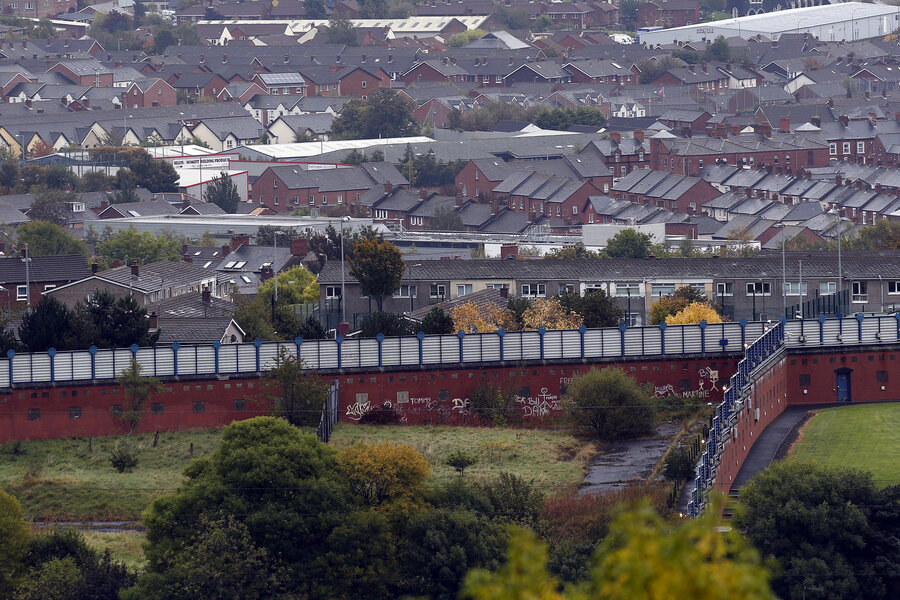How walls can divide neighborhoods within cities
| Belfast, Northern Ireland
Walls can divide cities as well as countries. While the Berlin Wall marked a geopolitical fault line, the “Peace Walls” of Belfast, Northern Ireland, had a simpler goal: to separate Catholics and Protestants during the uprising against British rule that began in the late 1960s. The British Army began erecting iron fences and brick walls to stop sectarian rioting. Today nearly 100 such barriers remain.
In 1998, Northern Ireland reached a peace agreement. Yet the number of walls and fences in Belfast has since increased. Calls to dismantle them have been largely rebuffed by communities that voice fears of crime and disorder as well as sectarian rivalry. What began as stopgap measures have become a permanent presence in the city of 281,000.
Along one wall on the Shankill Road, murals reflect partisan loyalties: “Freedom fighters” on the Catholic side, Unionist paramilitaries on the other. Foreign visitors arrive by taxi to take photos of the iconic wall.
Stephen (who didn’t give his last name) works on the Protestant side. He sees the barricade as necessary. “Relations have improved with the peace process, but there’s still an element that would come over” and cause trouble, he says.
Billy, who is walking a child in a stroller nearby, disagrees. “It’s an eyesore. I think it should come down,” he says.
Jonathan McKee, a pastor at a Pentecostal church that services both communities, says the answer lies in outreach to at-risk young men so they don’t riot. The wall is “an encumbrance.... Walls and gates actually contribute toward mental health disorders.”





